A National Seminar held on “Understanding the Cultural Focus on Thiruvarur Region Heritage of Tamil Nadu – Focus on Thiruvarur region” on March 17th and 18th 2022 at the Central University of Tamil Nadu – CUTN, Thiruvarur (2)

17-03-2022 (Thursday): As usual I got up by 3.45 am, but, I could not do anything here. I could listen to peacocks screaming, as they have been plenty here in and around. Mayiladurai – the place where peacocks dance is also nearby[1]. There was no internet connection also, though it was a Central University. Of course, nowadays all have a wireless internet connection that has become the order of the day. Thus, I was going through the papers and materials that are there in my laptop. Till 8.00 am nobody was there to tell anything about the seminar, inaugural function etc. No arrangement was made for coffee. We came down to the ground floor and saw people going here and there. One person was carrying a steel-flask with tumblers going to VIPs rooms, evidently serving them at their rooms. I saw Dr Rajendran coming after walking. We were talking for some time. I learned that has father Sri M. K. Narayanan aged 91 enjoying life with grandchildren and great-grandchildren also. I am happy to know about him, as he was the principal of our Pachaiyappas’ College.


The seminar is held after two years: It was to be held in March 2020 and then perhaps getting on postponed due to pandemic reasons[2]. Thus, as pointed out from January 2022, it was postponed to March 2022. Meanwhile, the faculty, persons involved with the seminar and others were also changed. Thus, with God’s grace, now the delegates have gathered here and the seminar is conducted. I am also happy to see, meet and talk with many old friends and others after two or three years.



10.30 am – Seminar hall: All were sitting, perhaps expecting the arrival of the VC of the CUTN, Prof. M. Krishnan. As usual, the lighting of the lamp also started with the VIPs sharing each wick and with shoes and without shoes. The Tamil-Mother praising song was sung with the clear instruction that all should stand. During the facilitation of the VIPs, I could notice that the VC had been generous enough to offer his shawl to a student! And of course, he did it last also, i.e, first the guests, a good gesture noticed.



10.43 to 10.7 am: Then, the VC started describing the importance of Thiruvarur and pointed out that had the delegates come a day before i.e, on 15-03-2022, they could have witnessed the “Great Chariot Festival”. Tiruvarur Chariot festival, known in Tamil as Tiruvarur Therottam, is a historical event that still follows the same rituals and traditions associated with the Thyagaraja Swamy temple, Tiruvarur, in Tamil Nadu. The Lord Veethividangar (வீதிவிடங்கர்) now called as Thiyagarajaswami (Shiva) comes out of the massive ancient temple, with his consort Kondi (கொண்டி) (Parvathi) to bless the devotees who always comes to visit him in his abode, one of the world’s biggest chariots. And this chariot was constructed by Kothanars and it is Asia’s biggest chariot of 95” high, weighing about 350 MT. After mentioning many temples, he pointed out that Kodikkarai is very near to Sri Lanka.

Importance of Vedaranyam, Kodokkarai etc: Kodiakkarai, also called Point Calimere or Cape Calimere, is a low headland of the Coromandel Coast, in the Nagapattinam district of the Indian state of Tamil Nadu. The Cape is located about 9 kilometres (5.6 mi) south of Vedaranyam in the delta region of the Cauvery River, and marks a nearly right-angle turn in the coastline. Vearanyam is also associated with the Salt Satyagraha conducted by Rajaji. The antiquity of the area is evidenced by the Kodi Kuzhagar temple built during the Chola period, and a Chola lighthouse, which was destroyed in the 2004 Indian Ocean tsunami. Kodiakkarai has been designated as a Ramsar site since August 2002. Point Calimere is also associated with the mythological Hindu epic, the Ramayana. The highest point of the cape, at an elevation of 4 metres (13 ft), is Ramarpatham, meaning “Rama’s feet” in Tamil. A stone slab on the Cape bears the impressions of two feet and is said to be the place where Rama stood and reconnoitred / watched over Ravana’s kingdom in Sri Lanka, which is 48 kilometres (30 miles) to the south of the Point. It is also mentioned by Kalki in his historical novel Ponniyin Selvan.

10.58 to 11.11 am Prof Bhagabana Sahu[3], HOD History Department, CUTN: he pointed out that Tamil Nadu has retained her distinctive cultural heritage from the rest of India and Tamil is the oldest classical language. It had an impact on the South East Asian region through maritime activities. R. Balakrishnan in his book, “Journey of a Civilization from Indus to Vaigai” stated the continuity of the culture and it can be traced back to c.500 BCE, Sangam Age.

11.12 to 11.17 am Louis Mushary: He introduced the dignitaries mentioning their qualifications, papers and books published, positions occupied, their management skills etc. The VC of CUTN left, as he was having the UGC meeting.

11.18 to 11.44 am Prof N. Rajendran, Former VC, Alagappa University: He distinguished the IVC, Mauryan and Asokan script, stone at etc with that of the Sangam literature and period. Tamilagam was not secluded from India and the Sangam literature has a pan-Indian identity. P. T. Srinivasa Iyengar points out in one chapter in his book giving many examples from the Sangam literature (the gold of Nandas hidden under the Ganges) and also from Ramayana and Mahabharata….The inscriptions of Asoka and Kharavela mention about the Tamil kings. In fact, the Kharavela Hatigumpa inscription gives the date of the Tamil kings matching with the Sangam Literature. While the Asokan Brahmi had been already a well-developed script, the Keeladi script had been in the developing stage.
11.44 to 11.8 am Prof Byomakesh Tripathy, VC, Utkal University[4]: he emphasized about the importance of the transfer of archaeological findings to the textbooks, so that it could spread to the academician. Writing history sitting at the tables without visiting the sites cannot bring out the full details and the facts. The intangible culture and cultural heritage have been very important and they should be recorded, as otherwise, many of such evidences may disappear. The elements of change and continuity have also should be noted, taken into account and writing history and historiography.

11.58 to 12.02 Prof Sulochana Sekhar, Registrar In-charge: Taking a clue from the Tamil words and expressions (திருவாரூரில் பிறந்தாலும், திருவாரூர் என்ற பெயரை சொன்னாலும் முக்தி கிடைக்கும், Jallikkattu, kal thondri man thondra kalattu ‘கல் தோன்றி மண் தோன்றாக் காலத்தே வாளொடு முன்தோன்றி மூத்தகுடி’ என்று புறப்பொருள் வெண்பா … etc..), she explained the cultural heritage of the Tamils.

12.03 to 12.2 pm Dr Dayalan, ex-Director, ASI: He read his paper with the PPT showing the Paleolithic, Mesolithic, microlithic, Neolithic, megalithic evidences and conjectural dwelling of the ancient people. All were expecting his findings of Keeladi, as other dignitaries were referring to him, but he told that he would be restricted to the earlier findings. He also asked the organizers to take copies of his paper and circulated them among the delegates, as he had given his full paper.
After a vote of thanks, the delegates disbursed for a lunch. By 2.30 pm, all assembled for the technical session to begin.
© K. V. Ramakrishna Rao
19-03-2022
[1] The famous Mayuranatha Svami (Siva) temple in Mayiladuthurai is one among the 275 Padal Petra Sthalams or temples which have been praised in the Tamil verses of the Nayanmars (important devotees of Siva). It is the thirty-ninth temple on the south bank of River Kaveri to be extolled in the hymns of the Nayanmars. Thirunavukkarasar (Appar) and Thirugnanasambandar of the 7th century C.E. have sung in praise of the main deity here. Mayuranatha Svami is believed to have stopped the floods of River Kaveri to make way for Thirugnanasambandar to visit this temple. The Siva Linga worshipped as Mayuranatha Svami is said to be Swayambhu (self-manifested).
[2] https://cutn.ac.in/events/understanding-the-cultural-heritage-of-tamilnadu-focus-on-thiruvarur-region/
[3] Former President ,Odisha History Congress, Former Professor & Head, Department of History Berhampur University, Professor & Head , Department of History , Central University of Tamil Nadu.
[4] Prof. Byomakesh Tripathy, the professor of the Department of History in Indira Gandhi National Tribal University, Amarkantak in Madhya Pradesh has been appointed as the Vice Chancellor of the Utkal University of Culture in Bhubaneswar, Odisha. Governor and Chancellor Prof Ganeshi Lal issued a notification in this regard. Prof Tripathy, a Ph.D. from Sambalpur University in 1994 has 27 years of teaching experience and out of that he has worked as Professor for 17 years. He is a resource person in ‘Formulation of Courses of Studies in History and Archaeology’. Prof Tripathy has authored at least five books and edited 13 books. He has attended 24 national conferences and nine International Conferences. He was the topper in History Honours of Sambalpur University in 1984. Besides, he has guided eleven research scholars for Ph. D. Earlier Prof. Tripathy has worked as the HOD of Dept of History, Rajiv Gandhi University, Itanagar, Chairman, Board of Studies, Director (Academics), Indira Gandhi National Tribal University.
Filed under: archaeological remains, archaeological survey of India, archaeology, Ariyar, Aryan, Brahmi, Brahmi potshred, Brahmi script, brahmin, c-14, civilization, date, date of Asoka, date of Buddha, date of Sankara, dating, Dramila, Dravida, Dravidam, dravidar, Dravidi, Dravidian, ethnicity, hemavati, heritage, heritage tag, Hindu, Hindu religion, Hindu Religious Endowment, hindu ritual, Hinduism, historian, historian politician, historical politician, historicity, historiography, history, ICHR, indus script, indus symbol, indus valley, K. V. Ramakrishna Rao, linguistics, linguistuic study, Madras, manuscriptologist, marine archaeology, maritime, marxism, Marxist historian, Marxist-Leninist, megalith, megalithic, mohammedan, mohammedan invasion, muslim, myth, mythologization, mythology, nation, nation building, neolithic, neolithic cattle keepers, New Chronology, objectivity, oceanography, paleobotanical research, paleolithic, pappan, parppanan, parppanar, pattanam, pazhaiyaru, people with history, people without history, periyar, periyar philosophy, political historian, poompuhar, portuguese, portuguese inquisition, prehistoric sites, proof, prostitution, publisher, publishing, Ramakrishna Rao, rao, ravana, reality, regionalism, relic, relocate, renovation, repair, rescue, rescue archaeology, research, research paper, reservation, rock, rock art, ruined temple, Saiva, Saiva Siddhanta, Saivam, Sangam, sangam, Sangam literature, sangam literature, sangam period, Sanskrit, sanskrit, sanskrit language, satyagraha, secession, sedition, self-determination, shaiva, ship, shipbuilding, shipbuilding technology, shipping, Shipping technology of the Tamils, slave, slavery, social justice, tamil, tamil chauvinism, Tamil inscription, Tamil manuscript, Tamil manuscripts, tamil sectarianism, tamil separatism, tamilnadu, technology, temple, temple ruins, thiruvarur, tourism, tradition, uncivilized, UNESCO, updating, uraiyur, vegetarian, wahabi, Wahabi conspiracy, wahabi movement, woman, women, women education, young, youth | Tagged: Ariyar, arya, Brahmi, Brahmi potshred, Brahmi script, chariot, chola, chola ship, cholas, Dramila, Dravida, Dravidam, Dravidar, Dravidi, Dravidian, gangaikondacholapuram, Kaveripumpattinam, Keeladi, korkai, rajaraja, rajendra, rajendra chola, tamil, Tamil Brahmi, tamil chauvinism, Tamil language, tamil nadu, Tamil script, tamil separatism, Tamilnadu, tanjore, thanjavur, thiruvarur, uraiyur, vallam | Leave a comment »































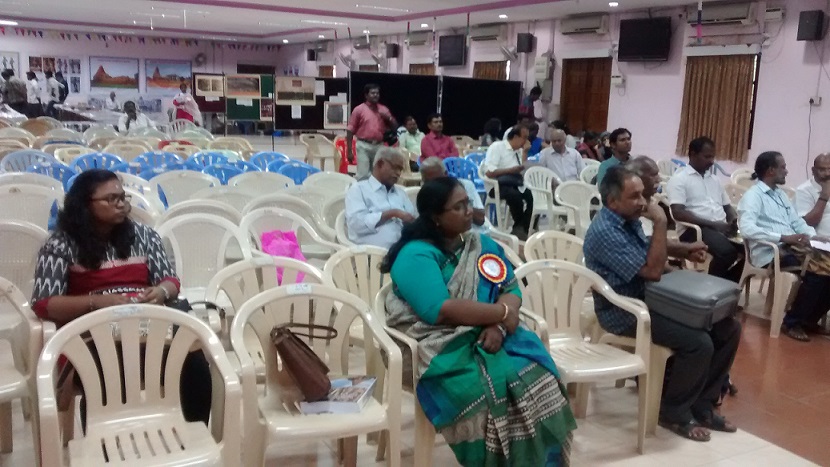



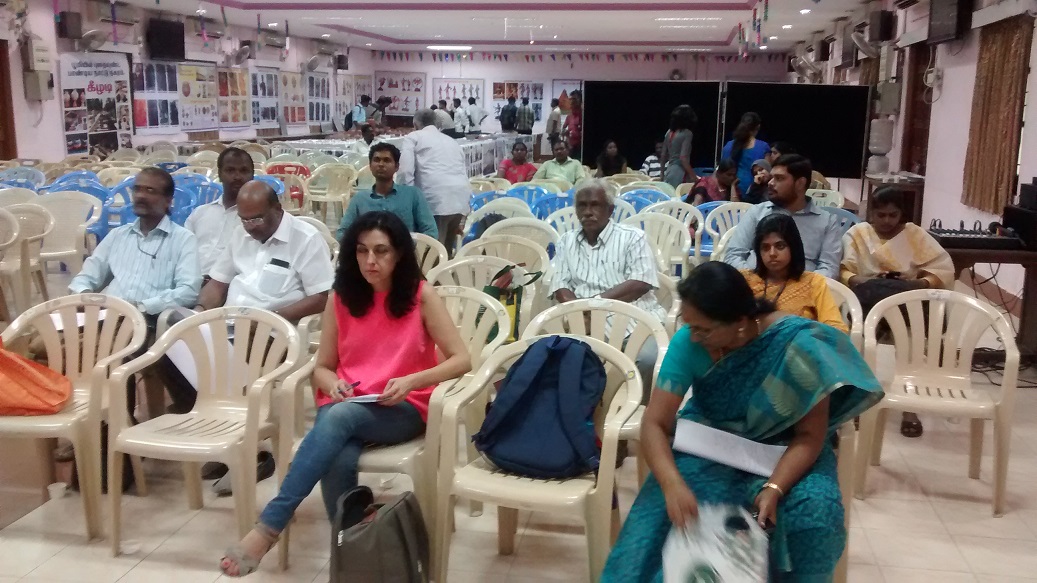
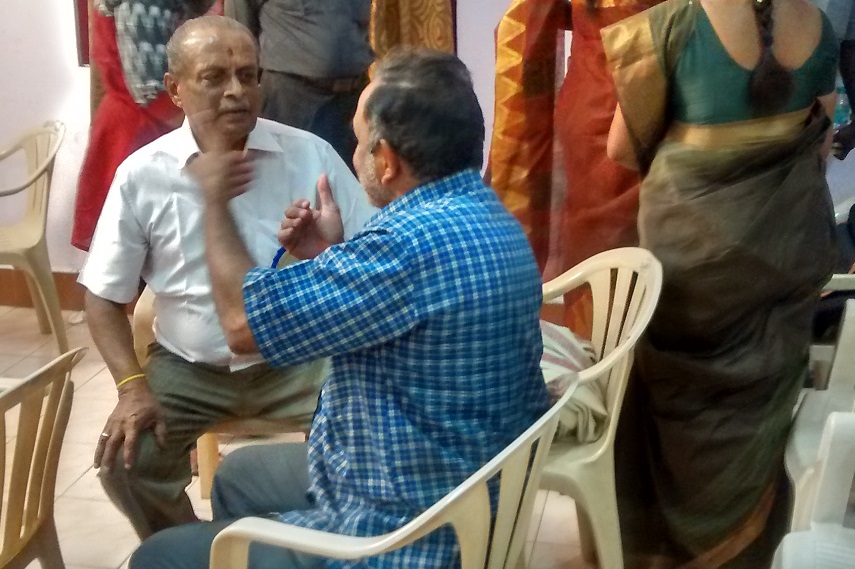









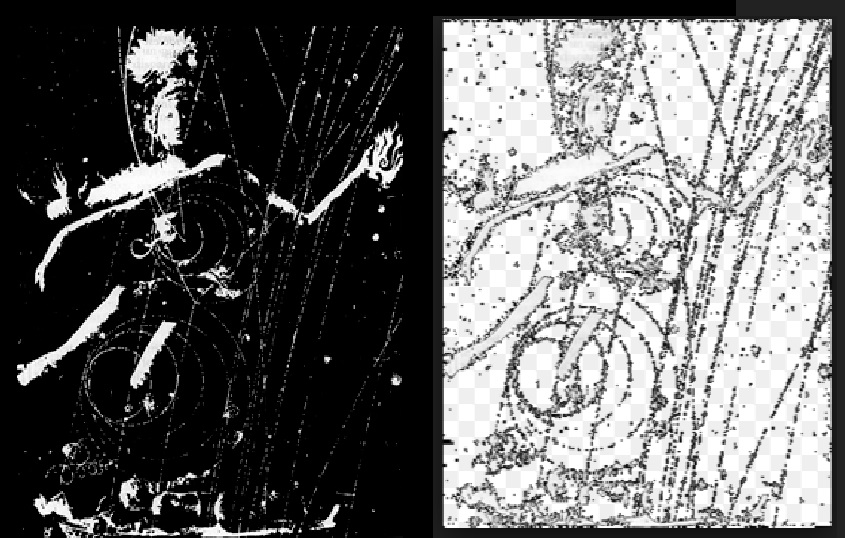
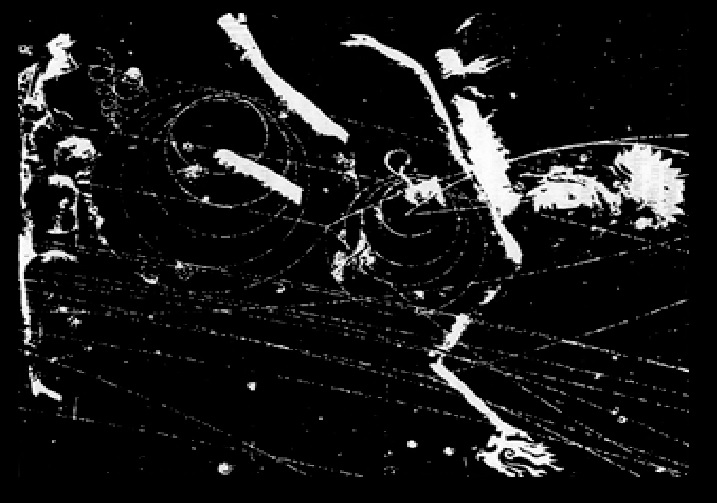

 The 9th national conference on marine archaeology of Indian Ocean countries was held at the Tamil University, Thanjavur on February 20th and 21st 2016 organized by the Society for Marine Archaeology, NIO, Goa
The 9th national conference on marine archaeology of Indian Ocean countries was held at the Tamil University, Thanjavur on February 20th and 21st 2016 organized by the Society for Marine Archaeology, NIO, Goa






 “The evidence from Pattanam (an ancient site near Ernakulam) clearly shows that cameo blanks were prepared in India, although they might have been finished in the Roman world,” she said. But in the case of intaglio (carving of stone or other materials), Tomber said the skills were probably transferred to India from the West. The ‘Empress’ pepper pot was part of a large Roman hoard excavated from Hoxne in the east of England. It contained more than 14,000 coins, gold jewellery, cutlery and other pepper pots. “The fact that the “Empress” is made of gilded silver shows the value with which pepper was regarded, and it was spices and particularly black pepper that drove trade between the Mediterranean and India,” said.
“The evidence from Pattanam (an ancient site near Ernakulam) clearly shows that cameo blanks were prepared in India, although they might have been finished in the Roman world,” she said. But in the case of intaglio (carving of stone or other materials), Tomber said the skills were probably transferred to India from the West. The ‘Empress’ pepper pot was part of a large Roman hoard excavated from Hoxne in the east of England. It contained more than 14,000 coins, gold jewellery, cutlery and other pepper pots. “The fact that the “Empress” is made of gilded silver shows the value with which pepper was regarded, and it was spices and particularly black pepper that drove trade between the Mediterranean and India,” said. About Roman coins – In most cases these coins were not used monetarily, but as bullion: Tomber said the largest finds of black pepper in the Roman world come from, including an Indian storage jar containing 7.5 kilos of black pepper. In the Roman world, black pepper was a very expensive commodity. One of the few items of similar value that the Romans could exchange with India was gold and silver – which was traded in the form of coinage. “In most cases these coins were not used monetarily, but as bullion. This is supported by the defacing and reuse of Roman coins in India. Coinage was so highly valued that it was imitated, both in metal and clay,” she said. During her research, she found a very different level of interaction evidenced by the common occurrence of Indian cooking pots at Quseir al-Qadim and Berenike in Egypt. “Unlike the Indian storage jars, the cooking pots are thought to belong to Indian sailors residing on site, enabling them to cook in a manner that was familiar. Only rarely has this pottery been found beyond the Egyptian ports, further supporting that they reflect a resident community rather than trade items,” she said. Roman amphorae, according to Tomber, are another type of pottery widely found throughout the Indian Ocean and its distribution, clustering at one or two port sites, suggests that many of the amphorae were for consumption in the ports
About Roman coins – In most cases these coins were not used monetarily, but as bullion: Tomber said the largest finds of black pepper in the Roman world come from, including an Indian storage jar containing 7.5 kilos of black pepper. In the Roman world, black pepper was a very expensive commodity. One of the few items of similar value that the Romans could exchange with India was gold and silver – which was traded in the form of coinage. “In most cases these coins were not used monetarily, but as bullion. This is supported by the defacing and reuse of Roman coins in India. Coinage was so highly valued that it was imitated, both in metal and clay,” she said. During her research, she found a very different level of interaction evidenced by the common occurrence of Indian cooking pots at Quseir al-Qadim and Berenike in Egypt. “Unlike the Indian storage jars, the cooking pots are thought to belong to Indian sailors residing on site, enabling them to cook in a manner that was familiar. Only rarely has this pottery been found beyond the Egyptian ports, further supporting that they reflect a resident community rather than trade items,” she said. Roman amphorae, according to Tomber, are another type of pottery widely found throughout the Indian Ocean and its distribution, clustering at one or two port sites, suggests that many of the amphorae were for consumption in the ports


 P. J. Cherian and “Pattanam excavations”
P. J. Cherian and “Pattanam excavations” There were murmurs and soft discussion among the delegates who were sitting in the front two rows particularly on LHS from the dais. I asked what the significance of it was and why it was shown in the slide. For this, he told, “I will tell you…………..yes, I will explain”. I asked again as to why he wanted to bring such controversies here. But, he tried to justify, so I told him to restrict his presentation to academic proceedings and not to bring any controversy to the University here.
There were murmurs and soft discussion among the delegates who were sitting in the front two rows particularly on LHS from the dais. I asked what the significance of it was and why it was shown in the slide. For this, he told, “I will tell you…………..yes, I will explain”. I asked again as to why he wanted to bring such controversies here. But, he tried to justify, so I told him to restrict his presentation to academic proceedings and not to bring any controversy to the University here. But, he was relentless and he appeared to proceed with his agenda. So I told, “If you do like this, some may raise slogans “Pakistan Jindabad”, “Afzalguru Jindabad” and so on here”. So when I went near to the screen to take a snap, Selvakumar, immediately changed to next. I told him that I wanted to take a snap of the first slide.
But, he was relentless and he appeared to proceed with his agenda. So I told, “If you do like this, some may raise slogans “Pakistan Jindabad”, “Afzalguru Jindabad” and so on here”. So when I went near to the screen to take a snap, Selvakumar, immediately changed to next. I told him that I wanted to take a snap of the first slide.  Immediately, he came to the dias and requested P. J. Cherian restrict to his findings at Pattanam. Then, I repeated the same in Tamil also. At last, he started his presentation showing his slides on “Pattanam excavations”! He was repeating the same point several times with many pauses. At one stage, he wanted to stress that there were points ………….he mentioned three, but, he could not tell the fourth. Interestingly, none of these Key-note addresses were given to the delegates of the Conference.
Immediately, he came to the dias and requested P. J. Cherian restrict to his findings at Pattanam. Then, I repeated the same in Tamil also. At last, he started his presentation showing his slides on “Pattanam excavations”! He was repeating the same point several times with many pauses. At one stage, he wanted to stress that there were points ………….he mentioned three, but, he could not tell the fourth. Interestingly, none of these Key-note addresses were given to the delegates of the Conference.

 Prof A. Sundara leading archaeologist from Karnataka pointed out that there were no major structural remains at the site. He asked P.J. Cherian to precisely record and classify antiquities from each trench rather than pooling them together and interpreting them.
Prof A. Sundara leading archaeologist from Karnataka pointed out that there were no major structural remains at the site. He asked P.J. Cherian to precisely record and classify antiquities from each trench rather than pooling them together and interpreting them.  Prof. Sundara told Cherian that such approaches were not adopted in field archaeology since cultural material from each trench had its validity. Prof Sundara also pointed out that the claims of structural remains from Pattanam was questionable.
Prof. Sundara told Cherian that such approaches were not adopted in field archaeology since cultural material from each trench had its validity. Prof Sundara also pointed out that the claims of structural remains from Pattanam was questionable. Dr. K. N. Dikshit former Joint Director General of Archaeological Survey of India and Secretary of Indian Archaeological Society questioned the claims of P. J. Cherian that Historical Period at Pattanam goes around 1000 BC. K.N. Dikshit asked Cherian to be cautious and review such claims since Historical Period in Peninsular India has not gone beyond 200-300BC.
Dr. K. N. Dikshit former Joint Director General of Archaeological Survey of India and Secretary of Indian Archaeological Society questioned the claims of P. J. Cherian that Historical Period at Pattanam goes around 1000 BC. K.N. Dikshit asked Cherian to be cautious and review such claims since Historical Period in Peninsular India has not gone beyond 200-300BC.  It was felt that the controversy could have been avoided in research, as it would only divide the experts, scholars and research.
It was felt that the controversy could have been avoided in research, as it would only divide the experts, scholars and research.
 The Second day – 21-02-2016 proceedings: On 21st February, the paper reading session continued with the following papers:
The Second day – 21-02-2016 proceedings: On 21st February, the paper reading session continued with the following papers: My paper also evoked the usual controversy about the existence of “Chola navy” etc., as usual. V. Selvakumar’’s suggestion about the “manufacture of ceramics in India with indigenous technology, but with imported designs on them” induced some questions. He responded that it was only his hypothesis. Tomber was suggesting the social stigma in using bowls and vessels by people, as their names were found on them. This was also questioned by others.
My paper also evoked the usual controversy about the existence of “Chola navy” etc., as usual. V. Selvakumar’’s suggestion about the “manufacture of ceramics in India with indigenous technology, but with imported designs on them” induced some questions. He responded that it was only his hypothesis. Tomber was suggesting the social stigma in using bowls and vessels by people, as their names were found on them. This was also questioned by others. After lunch, five papers were presented of which three in Tamil and two in English and the session was chaired by Thiru Naga. Ganesan. Then, the conference was wound up with the valedictory function. The national anthem was not sung and it was noted conspicuously by the delegates.
After lunch, five papers were presented of which three in Tamil and two in English and the session was chaired by Thiru Naga. Ganesan. Then, the conference was wound up with the valedictory function. The national anthem was not sung and it was noted conspicuously by the delegates.